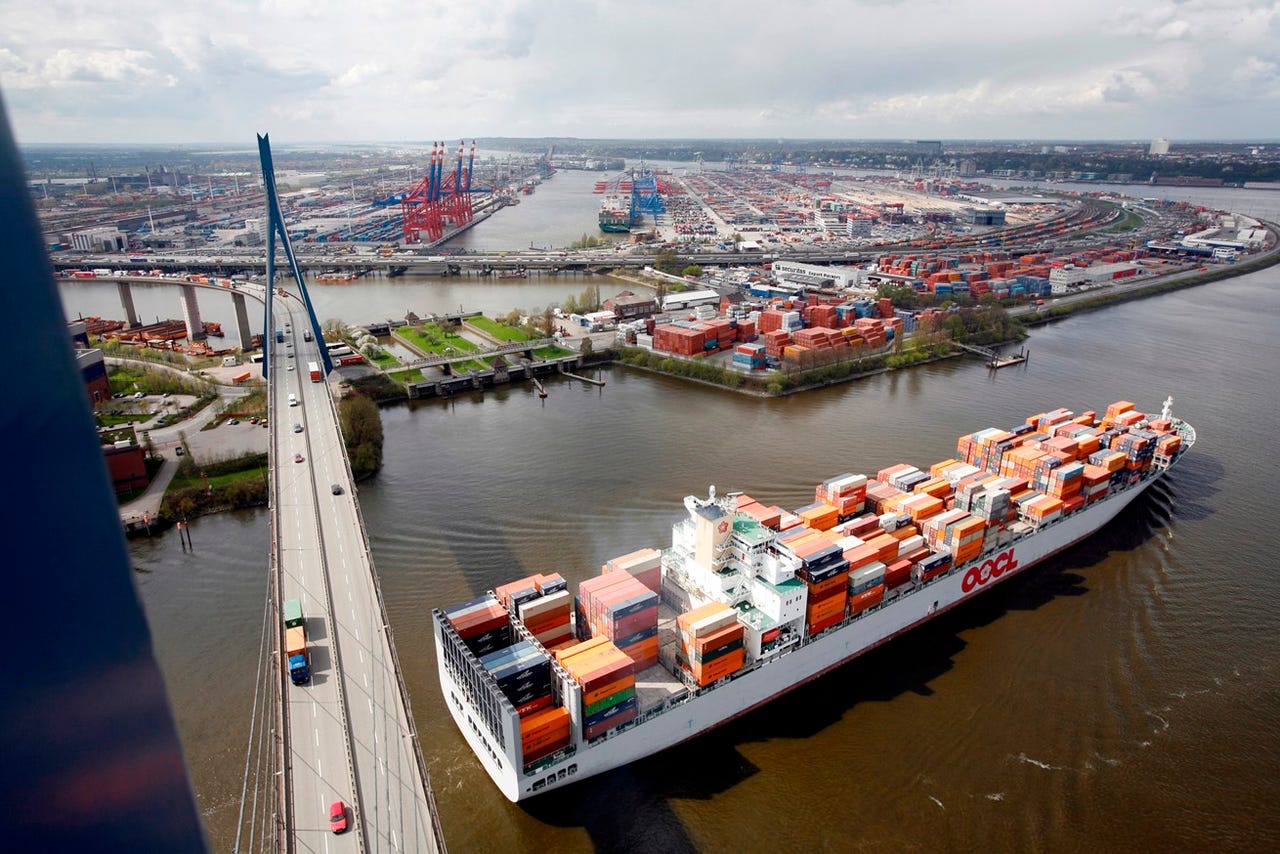Port stars: How Hamburg is tapping tablets and telematics to tame truck traffic


The Port of Hamburg in northern Germany is one of the world's busiest, and it's on the path to becoming one of the smartest - not for any special bragging rights, but simply because it has to.
Europe's second largest container port sits on about 74 square km of land along the Elbe river, in the center of the city of Hamburg. An estimated 40,000 vehicles move through the Hamburg port every day, and its container turnover is expected to nearly double in the next ten years, growing from nine million standard containers in 2014 to 18 million in a decade's time.
"Doubling containers means doubling the traffic on the rails, roads, and waterways," said Sascha Westermann, head of the operative IT traffic management at the Hamburg Port Authority (HPA). "It's not possible to build more roads. It takes a long time and there's no space. We need smart solutions, IT solutions."
So HPA is implementing a mix of technology, including intelligent networks and sensors, to better manage its traffic and trade flows. With the help of SAP and T-Systems, it has developed a platform, called smartport logistics, or SPL, to help coordinate it all.
Becoming a 'smartport'
One of the primary goals of Hamburg's effort to become a 'smartport' is to move truck traffic more efficiently in and around the port. In the attempt to arrive on time, truck drivers often get to the port too early and end up driving around or parking in residential areas, contributing to traffic problems, and wasting time and fuel.
In the past, the only way drivers could get information on port traffic, bridge use, and parking was through the 16 message boards posted throughout the port. Outside the port area, the truck drivers had very limited access to information, even with the advent of mobile devices. Standard traffic apps and internet searches couldn't provide real-time details of what was happening inside the port.
The effort to resolve that started in 2012 with an SPL pilot project, which included gathering traffic information from across Germany and data from the port's traffic management system, including elements such as shipping delays, bridge closures, and parking availability. The real-time information was then integrated and made available through a mobile app, so that truck drivers could more easily plan their journeys.
"Wherever you start your journey to Port of Hamburg, you'll be informed of the situation," Westermann said.
SPL uses SAP's Hana cloud technology, which has the ability to process huge amounts of data in a short amount of time, and T-Systems' TelematicOne system, which consolidates freight information using telematics from a variety of vehicles. TelematicOne also provides 'geofencing,' so that when trucks pass a certain point in the port, information the drivers receive can be tailored to their locations.
Many trucks make multiple stops at the port and to various destination cities in Europe to load and unload. The SPL app is helping many of them organize these routes or 'tours' more effectively. Drivers who are already using the app have told the port that they are able to increase the number of tours they can do in one day.
"Ultimately, this project is the foundation of an effort to run the port as a dynamic system rather than set of static units," Nils Herzberg, SAP's global head of industrial business unit automotive, said.
After the successful pilot project, the port is now starting to get trucking and logistics companies to use the SPL system. The drivers, as well as their vehicles, have to be equipped with some level of technology (tablets and telematrics, respectively) and trained how to use the SPL platform on their smartphone or tablet.
More smart tricks
The port is adding even more information to the platform through other projects like 'smart parking,' which aims to help truck drivers see what spaces are available in real-time and book parking bays through the SPL app.
In the 'smart road' project, workers are placing sensors along the port's roads to detect traffic, collect data on wind and emissions, and even turn the lighting on and off as vehicles or pedestrians pass by.
HPA's 'smart tag' project is aimed at addressing one of the biggest causes of traffic jams anywhere: construction. A connected device or 'tag' can be placed near short- or long-term building sites (such as on a lamppost, for example). Construction workers can then use the tag to indicate when they will start and stop work on a given day so that up-to-date information can be added to the SPL app, giving truck drivers and other port users the chance to change their routes.
The port will be finishing the implementation of many of these projects by June 1, when Hamburg will host the IAPH World Ports Conference. But Hamburg's 'smart' effort will stop then. It's a constantly evolving process, and one which is currently happening at a rapid pace. HPA's Westermann said the port has been releasing new tools every three months.
Given the upcoming conference, it's likely that many other ports worldwide will take a cue from Hamburg. There are some ports already using similar technologies at play in Hamburg, but none have a platform like SPL - a fact SAP is hoping to change.
"We are very proud of what we've achieved so far with the Port of Hamburg. Now we are trying to find analogous situations where it can be applied," said SAP's Herzberg. "Based on knowledge of this project, we'd like to position this as a solution in other major ports across the world."
Read more